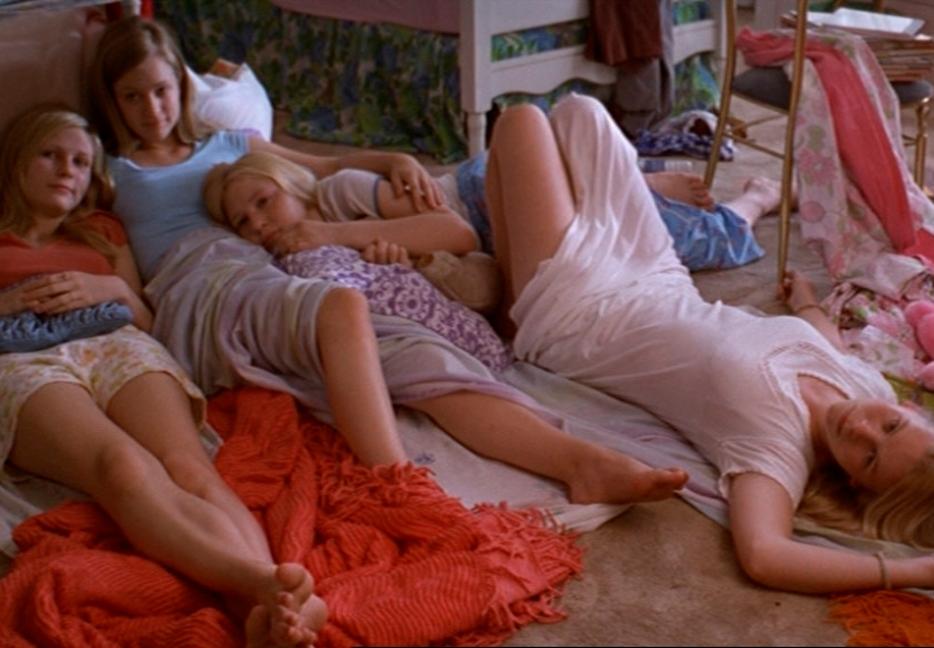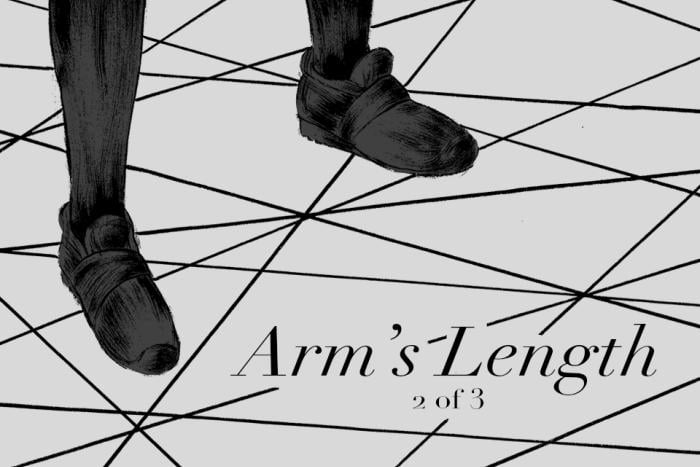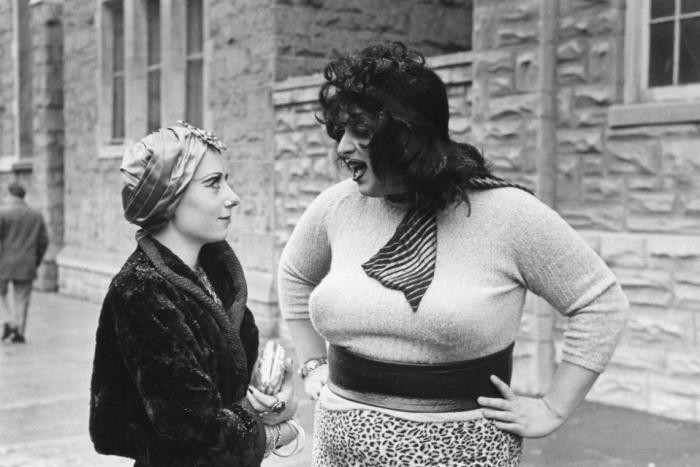Nineteen sixty-nine was a year of historic proportions. There were the Stonewall Riots, President Nixon’s inauguration, John Lennon and Yoko Ono’s Bed-in, and the Manson Family crimes. There were pacifist protests to confront the Vietnam War and peak pandemonium in rock music at Woodstock. It’s the cultural context into which Emma Cline enters her recent novel, The Girls, but despite being inspired by the Manson murders, the main characters are, in a sense, both physically and psychically distant from all this turmoil.
The book focuses on Evie Boyd, a then-fourteen-year-old girl who gets involved in a murderous cult. Though her trajectory feels very of-the-era, Evie is removed from the upheaval of the times. She and her mother live in Petaluma, a Northern California suburb; she and her best friend spend their days exchanging beauty tips and fantasizing about romance.
During a bored summer, Evie sees a cult member named Suzanne at the park and envies her cool, mysterious, and dangerous air. Soon, the girls grow close, and Evie begins spending more and more time away from home at the cult compound. But how and why did she go from befriending and assimilating to becoming an accessory to a murder? Besides Evie’s annoyance with her mother’s constant shuffle of boyfriends and her imminent entry into boarding school, I could not understand her motivation until I came across this description of the female members of the murderous group Evie attaches herself to:
“Where were their families, girls like Suzanne? Or baby-voiced Helen—she spoke sometimes of a house in Eugene. A father who gave her enemas every month and rubbed her calves after tennis practice with mentholated balm, among other dubious hygienic practices. But where was he? If any of their homes had given them what they needed, why would they be here, day after day, their time at the ranch stretching on endlessly?”
It occurred to me to re-contextualize The Girls as not just a novel about adolescence and female friendships but rather a raced story, one in which suburbia is the perfect backdrop for bored white females to spiral into chaos and break out from their comfortable, privileged lives.
The female followers of this elusive cult leader named Russell are not disadvantaged in any way. They do not come from broken homes. Their parents are not drug addicts. They are not poor. They are not struggling in school. What they crave above all is a deviation from the upward trajectory their parents have set for them, seeking instead to forge myths about their lives in order to appear edgier. At one point, one of the girls, Donna, tells Evie the truth about Suzanne: “‘You know,’ [Donna] said, ‘Suzanne’s parents are actually real rich. Propane or something. She never was homeless or anything, either. … Didn’t end up in any hospital. Any of that shit she says.’” Suzanne has to reimagine herself as a poor, homeless person in order to justify why she would run to a cult. If these girls came from stable homes in safe neighborhoods where their families were involved in their lives, then what were they lacking? The realization that the rest of cult members lived very affluent lifestyles baffles. Though the same lens could be directed at her, it is this kind of self-awareness that Evie avoids—she remains as distant from the girls around her, in a way, as she does the times she’s living in. The problem with Evie, and the other girls, is not that they are lacking, but that they are overwhelmed with resources and attention. Their suburban lives are free of disturbances, and so they create their own in order to taste some kind of excitement.
*
The history of America’s suburbs and the ways in which they were built is inextricable from our racial constructions of whiteness. From the 1930s to the 1950s, racial segregation was systematically executed through programs such as the Home Owners Loan Corporation and the Federal Housing Authority. Neither of these programs would lend money to African-Americans, restrictions that became the basis of redlining in this country—when whites moved to areas predominantly composed of people of color, they too were denied loans. This was just one of many tactics that systemically enforced segregated neighbourhoods and privileged the rights of white people at the expense of people of colour. In the 1960s, when blacks from the south migrated up north to work and live in cities, they began to establish homes in places such as Chicago, Detroit, and Cleveland. More African-Americans were entering into the middle class, accessing better jobs, education, and healthcare. The result? Many upper and middle class whites moved away from cities and into suburbs, perpetuating racially homogenized communities. In the city of Petaluma, where The Girls is set, according to a 1960 census, whites comprised a staggering 99.2 percent of the population. According to Martha R. Mahoney of the University of Pennsylvania Law Review, when suburban developments came about, white people were able to both finance and sell homes to other white people, creating insular neighbourhoods in which wealth and safety were engineered to correspond to racial demographics. This enforcement of whiteness cannot be divorced from how we read about white females’ self-destruction within these neighborhoods that are set up to nurture and perpetuate their presumable racial superiority.
It’s a common theme in many of the seminal novels set in the mid to late twentieth century. In Richard Yates’s Revolutionary Road, 1950s couple Frank and April Wheeler live in suburban Connecticut’s Revolutionary Hill Estates, which Yates describes as “a toyland of white and pastel houses whose bright, uncurtained windows winked blandly through a dappling of green and yellow leaves…” But in spite of this residential comfort, April Wheeler is not happy—in fact, Shep, her lover, has “never seen such a stare of pitying boredom in her eyes.” It is this boredom, rooted in the American Dream, which April has grown to hate. While speaking to her husband, Frank, April says, “...that’s what it is, an enormous, obscene delusion—this idea that people have to resign from real life and ‘settle down’ when they have families. It’s the great sentimental lie of the suburbs…” April is tired of conversing with the same friends and raising her children in a neighborhood that does not challenge her. She had dreams of becoming an actress until an accidental pregnancy and a subsequent marriage domesticated her. When she speaks of the sentimental lie of the suburbs, the subtext is a criticism of the replication of social and racial order. They live a mundane existence, one in which Revolutionary Hill Estates cultivates for whiteness. While black people are not physically present in this story, the uniformity of persons and socioeconomic status depict suburbia as a white, utopian existence that is boring because it is comfortable.
But this supposed utopia is what causes these white female characters to ruin themselves. One utopia was Grosse Pointe, Michigan, where Jeffrey Eugenides set The Virgin Suicides. In Sundown Towns: A Hidden Discrimination of American Racism, James W. Loewen describes Grosse Pointe as one of Detroit’s richest suburbs. In the Detroit metropolitan area, more than half of white families, poor and rich alike, live in suburbs, whereas among blacks, only a tenth of families, even those who were wealthy, did. Race, more than class, has historically determined who could live in Detroit suburbs. The Virgin Suicides is set in the 1970s, and follows the lives and eventual suicides of the five Lisbon sisters, through the narration of boys from their neighbourhood. We can’t access their interiority, and as such, it is never fully explained why they kill themselves, which leads the townspeople to speculate. When Cecilia Lisbon first attempts suicide by slitting her wrists, and then successfully does so by falling from her window and impaling herself on her family’s fence, Mrs. Buell, one of the community members, says, “That girl didn’t want to die ... She just wanted out of the house.” Mrs. Scheer, another community member, says, “She wanted out of that decorating scheme.” Cecilia impales herself on a traditional symbol of suburbia, and the instrument of her death suggests her succumbing to the expectations of this “decorating scheme.” When we look at Grosse Pointe as a historically white space that Eugenides depicts as an otherwise peaceful setting, we understand that the Lisbon’s environment was so banal that it became stifling. They are products of privilege and this pre-determined order is what leads them to self-destruction.
When we look at the suburbs through the eyes of women of colour, the picture changes. Lisa See’s Shanghai Girls, which is partially set in the same period as Revolutionary Road, is the story of Chinese immigrants to the United States, whose lives are deeply affected by the outside world that white suburbia neglects. World War II, The Chinese Exclusion Act, and McCarthyism interrelate to their personal histories because how could they not? They are female characters of color who must be mindful of the ways in which American society sought to restrict their movement and erase them altogether. Julia Alvarez’s How The García Girls Lost Their Accent, spanning the late 1950s to 1970s, also takes place in a suburban community, but because the titular García girls are from the Dominican Republic, they are pressured to assimilate to white culture, face racism, and, in Carla’s case, subjected to a child molester who masturbates in a car and talks to her through an open window. In Ruby by Cynthia Bond, memories of sexual and interpersonal violence plague a woman who returns to the town where these events occurred. In all of the aforementioned stories, for women of color protagonists, their communities are characters themselves, sentient beings who are enemies to their respective autonomies and lives. They may live in suburban communities like Evie Boyd, April Wheeler, or the Lisbon sisters, but their neighborhoods aren’t characterized in the same way. For women of color, any neighbourhood in America is moving and pushing against her personhood. But for white women in the aforementioned texts, their neighborhoods are static and affluent. These neighborhoods do not seek to destroy them and so in turn, they destroy themselves to break from the pattern of privilege society has placed them in.
*
After finishing The Girls, I realized I do not read about white women’s lives in the same manner in which I read about the lives of women of color. The former is an escapist route for me. These white female characters have everything: family, money, friends, and societal reinforcement that they are better than rest. And yet, they still want to ruin themselves, and the writers often do not explain why. Is it the danger that their whiteness does not afford them? Is there this subconscious awareness of their privilege that causes them to try to step outside of it so that they can be seen more as individuals than as parts of white hegemonic structures? I can only interrogate. But in my position as a black female reader, I pour into stories and leave them feeling more stupefied than full, wondering if boredom in literature is another form of white privilege—one that women of color cannot access as society’s direct adversaries. Therefore, they need to struggle in a multitude of ways that serve as a background for further intersectional study. For white female characters, I am not so sure: their destruction is described as one of their own volition. It is a destruction in which a world wants them to exist, a world in which they are the standard for beauty, purity, and innocence, and they reject that world by disappearing. For women of color, it is the opposite, and that makes all the difference.






